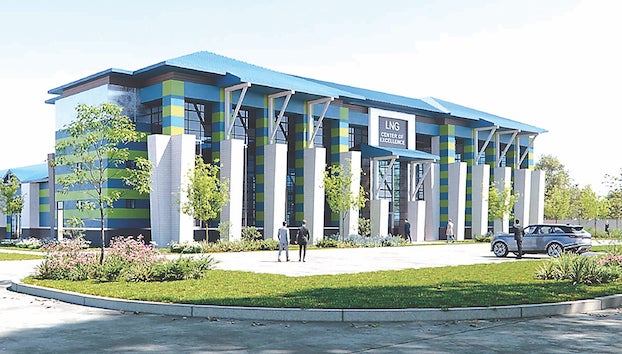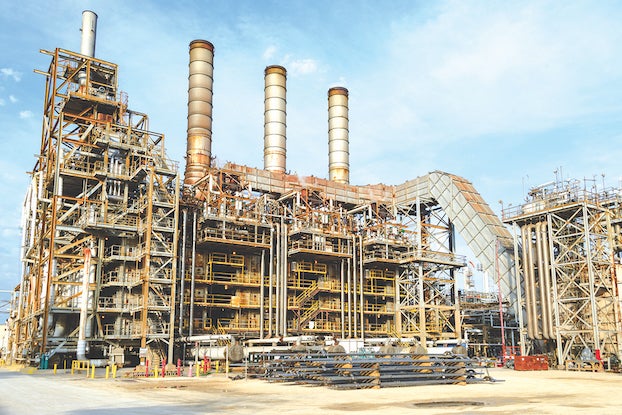LNG Center of Excellence to help establish area as industry thought leader
Published 12:43 pm Thursday, July 21, 2022

- An architectural rendering of what the front of the new LNG Center of Excellence will look like. (Source: Kudla Architecture)
The rising demand for natural gas and Southwest Louisiana’s place as top exporter sets the stage to highlight this area — not Houston — as the epicenter for expertise, education, training and other LNG best practice resources, according to Jason French.
Last week, French talked to media and industry leaders at the Lake Area Industry Alliance (LAIA) meeting. Topics included the natural gas export market, LNG’s start in Southwest Louisiana and plans for the McNeese State University LNG Center of Excellence.
French was named executive director in January. Louisiana’s Economic Development Administration (EDA) awarded a $2.8 million CARES Act Recovery Assistance grant to McNeese State University Foundation in June 2021 to construct a Center of Excellence to serve as a hub of resiliency for the Liquified Natural Gas (LNG) industry.
“I’ve had a front-row seat for some really big things that have happened in the energy sector,” French said. “None of those are bigger than the paradigm shift that has happened in the energy markets centered here in Southwest Louisiana.”
He said that while there has already been considerable LNG investment, the market is right for expansion at existing facilities and the construction of new facilities.
The three LNG companies operational today have invested about $34 billion, he said.
“Imagine if we built a superdome here,” he said. “That would be a point of pride, a front-page story, a point of civic pride. The investments by the three companies represent 37 superdomes, and, yes, I adjusted for inflation, and there are tens of billions of more investments to come.”
French told about Cheniere’s Charif Souki plans in 2004 to launch an import – not export – facility in Cameron Parish.
“They were breaking ground in 2008, and as legend has it, employees were distracted from the ribbon cutting and looking at their Blackberries,” French said.
Stock was collapsing. Fracking and horizontal drilling had unlocked abundant supplies of natural gas. Cheniere had made this historial bet – and it turned out not a good one – based on the suggestion of “brilliant” people, French said. “The head of the federal reserve said that for the U.S. to keep going, massive amounts of natural gas would have to be brought in.
Millions of dollars in debt, Souki proposed going the other way, exporting natural gas.
“In the early days of Cheniere planning, it was not without controversy,” French said. “Head of one of the largest chemical companies in the world bankrolled a campaign to stop LNG exports.”
After concerns were abated about supply and pricing, Cheniere began exporting 62 billion cubic feet per day, with the first shipment going out in 2012.
“It happened because the numbers made sense.” Today we are producing 12 billion cubic feet a day more than we use and exporting about the same,” French said.
French said the war in Ukraine didn’t create a greater demand. It highlighted Europe’s overdependence on Russian energy.
“I’ve been talking about this for ten years now,” he said.
In addition to helping break Russian’s hold on European energy, natural gas can help with lowering greenhouse gases as it burns cleaner than coal. The European Union lawmakers voted earlier this year in favor of calling natural gas a sustainable energy source.
LNG officials at the LAIA meeting agreed that they are currently working at max capacity.
“There is a strong market for future development and future facilities here,” he said. “It takes four to five years to build a plant and two to three years to permit. The process for permitting alone is $100 million,” French said. “But we have to make wise decisions now…”
French took the opportunity to talk about why the mushroom cloud comparison is not an accurate representation of what could happen at an LNG facility.
“It’s not a pipeline with 1400 psi behind it,” he said. “It’s worth noting that the tankers are double hulled. “Were you to have a puncture, the liquid interacts with the atmosphere and begins to vaporize. Methane will only burn in a very defined ratio of 5 to 15 percent natural gas to air. It does not by nature explode.”
He said plants were “designed, designed and overdesigned” to handle any incidents within the terminal and bound by federal regulators to be able to do so.
“It is scientifically impossible to create a mushroom cloud with an LNG facility,” he said.
When asked about the explosion at the Texas facility last month, he said that terrorism had been ruled out and he wasn’t privvy to preliminary reports. The explosion was contained within the facility. No one was killed and the plant will be rebuilt soon. He compared LNG plants to other manufacturing and chemical processes.
The LNG Center of Excellence
The LNG Center of Excellence would be a repository for industry best practices. Dollars are being pursued for research.
“There’s no reason that the Wall Street Journal shouldn’t come through McNeese for information on LNG if they’re writing a story a year from now.”
French said the center is about “homegrown training opportunities targeted specifically at LNG” not only on the operations side, but also on the business side. An important aspect of the program is that it will provide substantive linking and experience with counterparts at the current companies. In addition to collaborating with local companies to provide needed curriculum and training, the center could be instrumental in attracting future big industry events.
“The idea that you’re looking for experts in LNG and you don’t come to where the LNG is right now is certainly bothersome,” he said.
The center will be governed by an executive advisory counsel of high level industry CEOs and state and federal government; a chief operating technical advisory committee and communications and policy representatives. It is scheduled to open the first quarter of 2024 and French said in September, more information about funding and organization will be shared with the public.





